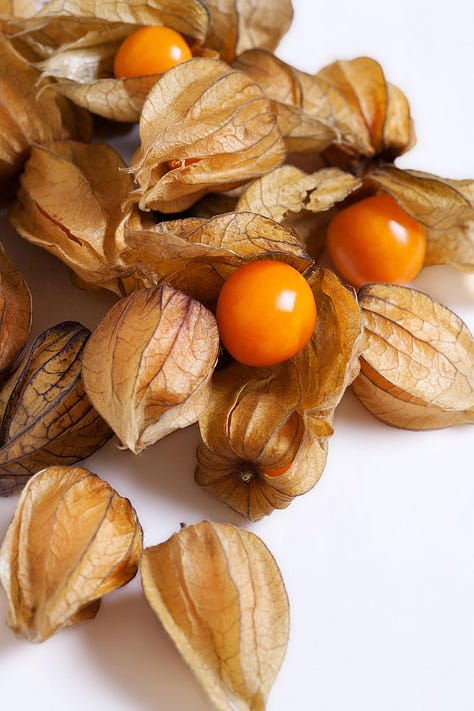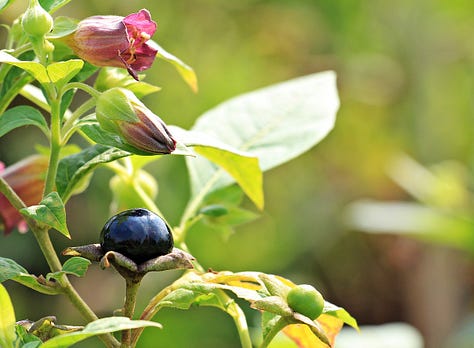Before knowledge of biochemistry allowed us some ability to predict the toxicities of herbs, the knowlege was acquired empirically by many of our less fortunate predecessors. Before people knew that hemlock was toxic, someone found out the hard way. Socrates was not a test case. By that time, a workable dose had been established, about 6 of the leaves.
We take this opportunity to honor those who gave their lives to expand our knowledge of plant toxicities, by sharing some of what they taught us.
Poisonings coming into the emergency departments of most hospitals are from street drug use, or from suicide attempts. Outside of allergic reactions, actual plant poisonings are fairly uncommon. Children’s hospitals encounter a lot more cases of accidental poisonings due to household substances and some plants. But proportionately these are not as common as one might expect, considering the myriad opportunities. Because of this relative rarity, proper treatment and management usually has to be looked up, or the one of the Poison Control centers is called.
In the U.S., the 55 or so branches of the National Poison Control Center collect the statistics of their calls, which come from individuals, caregivers or health care providers.
2021 statistics reveal that kids under 6 were about 10 times more likely than adults to have a potential poison exposure, 83% of which required no special treatment. Here’s the gold nugget. Only about 3-4% of the poison exposures (representing ~21,400 calls to Poison Control) in the pediatric population involved plants. None of the pediatric poisoning fatalities reported from 2017 - 2021 involved plants. It’s the analgesics, antidepressants, antihistamines iron containing supplements, topicals, cosmetics, etc. that are causing the most trouble. Hide that stuff if you have kids. In adults, the incidence of plant poisonings is vanishingly small, though overdoses and adverse effects from cannabis, (e.g., hyperemesis), definitely figures into the emergency room visits.
Why are there relatively few significant plant poisonings in kids? Because the most toxic plants usually taste NASTY, so they don’t get enough to do serious damage. Another reason is that the kids are getting less time outside, so they’re dipping into all the household items which are overall more poisonous than the plants. As with so many other aspects of life, exposure to news media has warped our sense of relative risk. The unusual and the exotic occurrences are featured and repeated within the news echo chamber, vastly affecting our perceptions of potential hazards.
Do you have the U.S. National Poison Control phone number? If not, now you do. 1-800-222-1222. There’s a number in Australia: 131-126 to NSW Poisons Information Centre. The UK has National Poisons Information Service: NPIS with a phone number of 111 in England.
Many of our honorable deceased have supplied us with dosing information, whether it be food, drink, flavoring or medicine. There’s always an upper dose. Everyone eats cinnamon as a spice. If you have an ounce or two all at once, it’s potentially fatal due to certain anthraquinone and alkaloid constituents. People are experiencing upper doses a lot more often with internal use of some essential oils, which are extremely concentrated compared to any whole plant material. The upper dose of common food items is generally quite large, but some people have become bulk consumers of specific food items, and it’s cutting into their life span. Some foods are very toxic when eaten raw, but become safe when cooked as the offending ingredients are denatured or degraded. Castor beans contain an exceptionally toxic lectin, called ricin, which has to be degraded by heat to safely produce the ever popular :-D castor oil.

Many types of commonly eaten beans must be soaked and cooked to become edible, because they contain high quantities of other lectins, (a truly formidable class of glycoproteins) which are offensive to the GI tract, and can cause significant, or even fatal systemic problems if consumed in large quantities. Lectins exist in all plants to varying degrees, and humans are adapted to tolerate them in lower quantities. Our food preparation knowledge allows us to regulate the dose. One of the repositories of traditional wisdom about food preparation is the Weston Price Foundation. These people can definitely teach you how to feed yourself well, (though they have a few ideas in other health areas to which we don’t necessarily subscribe.)



At Weedom, we have a fair sized, hard copy library of plant chemistry, pharmacology and toxology references. With the disappearance and breakdown of many internet herbal resources, you might want to consider assembling a little library of your own. Any of you who are health care professionals will likely have pretty good access to some botanical resources as a part of Lexicomp, etc., as well as more useful library access than most.
Though the folk knowledge of natural remedies has existed from prehistoric times, it has waned in recent centuries. From the late 1800s through the early half of the 1900s, this knowledge seemed to be largely driven underground as governments and corporations held more sway over the educational processes and institutions, as well as the licensure of practitioners. Like the weeds, the knowledge could never disappear entirely. In the U.S., the back-to-nature movements, and the hippies returned herbalism to public attention, and ethnobotanists were traveling the Amazon river basin and Africa to see what natural products could be used as models for patented pharmaceutical analogs. At one time, a discipline called Pharmacognosy, which dealt with the knowledge of medicinal products originating from natural sources, was commonly taught to U.S. pharmacy students. That has faded away here, though it fortunately still persists as a discrete curricular offering in many other countries. There still remains the American Society of Pharmacognosy and the Journal of Natural Products. Where is the 2024 International Congress of Natural Products Research being held? Krakow Poland, and that’s to be expected because so many of our pharmacognosy friends are in Eastern Europe, and even more reside in Africa and Asia.
Another organization we watch is the American Herbal Products Association. They are transparently a voice of the herbal products industry, and herb producers and testing industries are their sponsors. One of the useful things they produce is the Botanical Safety Handbook, which last came out in hard copy in 2013. They continually update the online version, and there’s an option to subscribe in order to have access to the updates. This reference gives an idea of what is known about use of the herbs in pregnancy and lactation, drug interactions, and what has been discerned about their activities from published trials or tests.
The American Botanical Council, a.k.a. the Herbal Medicine Institute is a non-profit organization that’s been around since 1988. This group is member supported and publishes the Herbalgram, a quarterly journal, a monthly newsletter, HerbalEgram, and a bi-weekly Herbal E-clip that reviews articles on herbal research and regulation.
Drug interactions with the weeds of medicinal or spice use, as well as some which are of food use, shouldn’t be overlooked. Of increasing importance are the interactions with anti-coagulant (blood thinner) drugs, which are in much more common use these days. (Heads up to all the nattokinase users, and people chronically taking NSAIDS such as ibuprofen.) Next in line are the interactions with the drugs which treat diabetes. Third are all the psychoactive med interactions with the nervine classes of weeds. Do you take LOTS of demulcents or want to eat a plate full of okra, or want an aloe smoothie? Separate these things from your meds, especially from those which have a very narrow, specific dose requirement. The drug interaction information is coming out faster than any person could possibly keep track, which is why you want to look it up before adding any new weeds in therapeutic quantities and/or long term.
We can expect a resurgence of interest in natural medicinal products, and preventative care in response to the knowledge that our government influenced health care systems have fallen flat on their faces. With FDA approval meaning little more than a mutual back-scratching relationship between big-pharma and government, the “Wild West” of medicine has returned. People eventually will rely on those to whom they can ascribe benevolent intentions, rather than those who previously have had claim to superior technical knowledge and resources. It’s our hope that many weedom readers will develop into family and community leaders in health maintenance.








Should herbal capsules be taken separately from demulcents or fiber also?
Great blog. I’m going to share to Tumblr